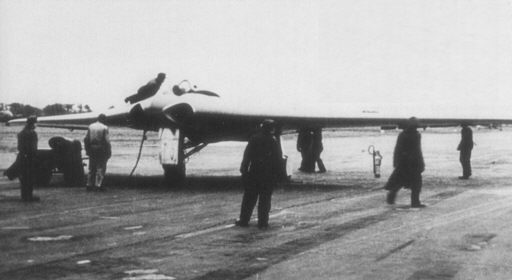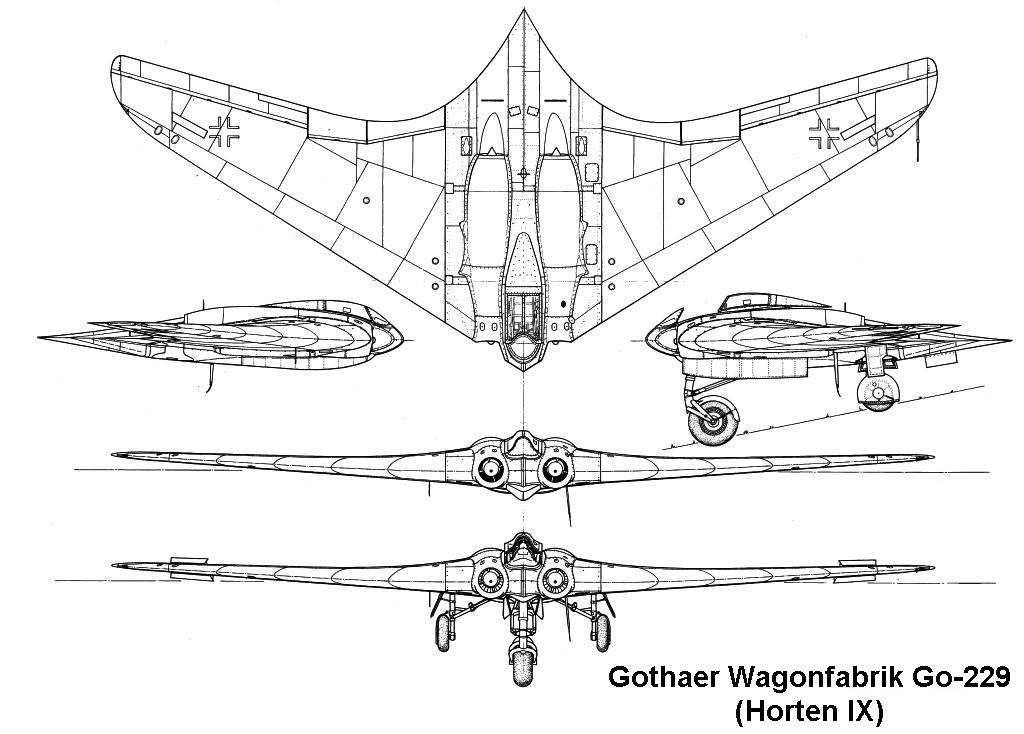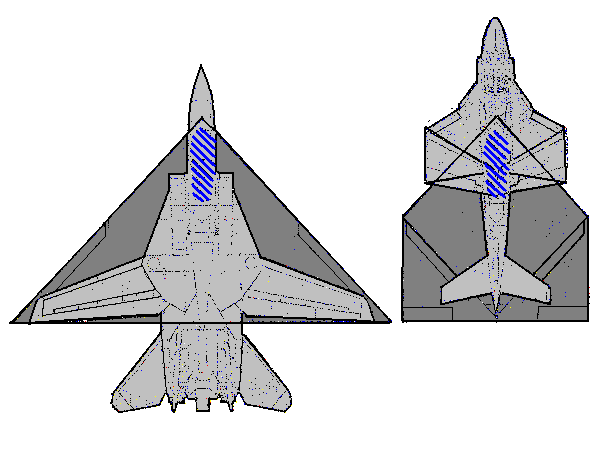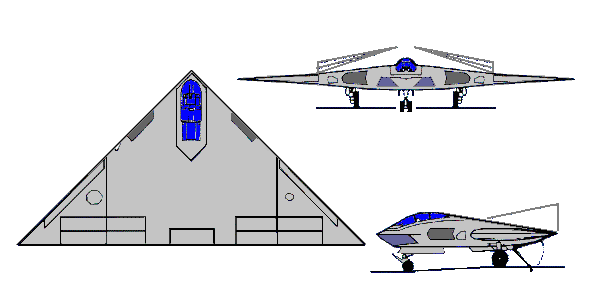http://www.scramble.nl/airforces.htm
NOTÍCIAS
Moderadores: Glauber Prestes, Conselho de Moderação
- soultrain
- Sênior

- Mensagens: 12154
- Registrado em: Dom Jun 19, 2005 7:39 pm
- Localização: Almada- Portugal
Air Force Bomber Redux...
The next bomber in the US Air Force inventory should be stealthy and subsonic. It should travel 2,000-nautical miles to its target and have enough fuel on board to get home. It should carry at least 28 500-pound bombs. And (surprise!) there should be a human pilot on board.
These are the conclusions of the Air Force's recently completed analysis of alternatives for a next-generation bomber to be fielded around 2018.
This is supposed to be a new thing, of course, but those specifications seem strangely familiar.
Anyone remember the A-12 Avenger II? It, too, was a stealthy, subsonic, manned aircraft that blurred the boundary between an attack aircraft and a bomber.
Dick Cheney cancelled the A-12 program on 7 January 1991, just as the bombs started to fall on Baghdad during Operation Desert Storm.
True, the A-12 was conceived as a carrier-based land attack aircraft, but it wasn't entirely a Navy bird. According to our dog-eared copy of Jane's All the World's Aircraft 1991-92, a "USAF A-12" had been proposed as a replacement for the F-111.
The F-111 was designed to carry 24 500-pound bombs and travel 1,800 miles, and it's not unfair to think the proposed USAF variant of the super-secret A-12 would have been very similar in capability.
So, congratulations, taxpayers: Watch the Air Force spend billions of dollars over the next decade for an aircraft that General Dynamics and McDonnell Douglas very nearly delivered to the navy and the air force 15 years ago.
Christian adds:
The Washington Post reported today the law suit between the government, General Dynamics and Boeing Co. that festered for years over the cancellation of the A-12 program has been adjudicated in favor of the government’s position.
The U.S. Court of Federal Claims upheld the government's 1991 decision to terminate the companies' contract for the A-12 radar-evading plane, General Dynamics and Boeing said.
The "contracting officer could have concluded that McDonnell Douglas and General Dynamics had 'no reasonable likelihood' of delivering the aircraft on time as measured by the schedule," Judge Robert H. Hodges wrote in the decision. McDonnell Douglas merged with Boeing in 1997. "We must again uphold the Government's default termination…"
…The debate dates to the eve of the Persian Gulf War in January 1991 when Dick Cheney, who was defense secretary, canceled the program, which was over budget and behind schedule. The Pentagon demanded return of the $1.3 billion it had invested in the plane, and General Dynamics sued, arguing that the real reason for the cancellation was that the Pentagon needed money for the war. No A-12s were ever built.
The case has been in the courts for years and became a symbol for the difficulty of canceling a weapons program. In 2002, the Navy told General Dynamics and Boeing to pay $2.3 billion to settle the case, which the companies refused to do. That demand included $1 billion in interest.
-- Stephen Trimble
May 4, 2007 07:30 AM
- cabeça de martelo
- Sênior

- Mensagens: 39579
- Registrado em: Sex Out 21, 2005 10:45 am
- Localização: Portugal
- Agradeceu: 1139 vezes
- Agradeceram: 2864 vezes
- cabeça de martelo
- Sênior

- Mensagens: 39579
- Registrado em: Sex Out 21, 2005 10:45 am
- Localização: Portugal
- Agradeceu: 1139 vezes
- Agradeceram: 2864 vezes
- Bolovo
- Sênior

- Mensagens: 28560
- Registrado em: Ter Jul 12, 2005 11:31 pm
- Agradeceu: 547 vezes
- Agradeceram: 442 vezes
cabeça de martelo escreveu:A sério?!
Mais parece o B-2 mais pequeno!!!
Sim, é sério!
http://en.wikipedia.org/wiki/A-12_Avenger_II
http://www.fas.org/man/dod-101/sys/ac/a-12.htm
http://www.globalsecurity.org/military/ ... t/a-12.htm
"Eu detestaria estar no lugar de quem me venceu."
Darcy Ribeiro (1922 - 1997)
Darcy Ribeiro (1922 - 1997)
- Dieneces
- Sênior

- Mensagens: 6524
- Registrado em: Seg Abr 09, 2007 1:50 pm
- Localização: São Gabriel , RS
- Agradeceu: 9 vezes
- Agradeceram: 10 vezes
Naquele filme , Independence Day , havia uns desses . Tomaram parte no ataque à Terra.Bolovo escreveu:cabeça de martelo escreveu:A sério?!
Mais parece o B-2 mais pequeno!!!
Sim, é sério!
http://en.wikipedia.org/wiki/A-12_Avenger_II
http://www.fas.org/man/dod-101/sys/ac/a-12.htm
http://www.globalsecurity.org/military/ ... t/a-12.htm
Brotei no Ventre da Pampa,que é Pátria na minha Terra/Sou resumo de uma Guerra,que ainda tem importância/Sou Raiz,sou Sangue,sou Verso/Sou maior que a História Grega/Eu sou Gaúcho e me chega,p'ra ser Feliz no Universo.
- Pedro Gilberto
- Sênior

- Mensagens: 1366
- Registrado em: Ter Nov 01, 2005 6:19 pm
- Localização: Salvador / BA
- Agradeceu: 116 vezes
- Agradeceram: 17 vezes
Lembra o design da asa voado dos alemães na II GM, o Ho 229, só que mais "stealthizado"!!!

http://www.paginaplastico.com/newfile_16.htm


[]´s

http://www.paginaplastico.com/newfile_16.htm


[]´s
"O homem erra quando se convence de ver as coisas como não são. O maior erro ainda é quando se persuade de que não as viu, tendo de fato visto." Alexandre Dumas
- Skyway
- Sênior

- Mensagens: 11166
- Registrado em: Seg Jun 19, 2006 1:40 pm
- Agradeceu: 24 vezes
- Agradeceram: 266 vezes
Existem relatos bastante convincentes que mostram que os EUA operaram durante um tempo, em segredo e não sei para que fim, uma certa quantidade de uma aeronave praticamente cópia do Ho 229.
Foi até a observação de uma formação dessas aeronaves por um piloto civil que deu origem aos boatos de discos voadores....mas isso não é para esse tópico.
Foi até a observação de uma formação dessas aeronaves por um piloto civil que deu origem aos boatos de discos voadores....mas isso não é para esse tópico.
AD ASTRA PER ASPERA
- Paisano
- Sênior

- Mensagens: 16163
- Registrado em: Dom Mai 25, 2003 2:34 pm
- Localização: Volta Redonda, RJ - Brasil
- Agradeceu: 649 vezes
- Agradeceram: 285 vezes
- Contato:
FAB inicia reforma de caças supersônicos
Fonte: http://www.tribunadaimprensa.com.br
Fonte: http://www.tribunadaimprensa.com.br
SÃO PAULO - A aviação militar brasileira tem um plano e um programa. O plano envolve a compra de um lote inicial estimado em até 26 caças supersônicos de 5ª geração, tão modernos que, nos países fabricantes, só agora começam a ser recebidos pelas forças aéreas ou ainda estão em fase final de desenvolvimento. Um contrato superior a US$ 1,3 bilhão, que vai exigir ao menos dois anos de definições e negociações.
Se o pedido fosse fechado hoje, o modelo francês Rafale seria o escolhido. Eletronicamente avançado, compatível com os métodos de trabalho da Força Aérea Brasileira (FAB), robusto e coberto por ofertas oficiais de transferência de conhecimento sensível, associadas a um bom esquema de compensações comerciais, o jato não sai por menos de US$ 45 milhões.
No Alto Comando há brigadeiros que consideram o F-35 Lightning, americano, uma solução melhor. A aeronave está fazendo seus primeiros vôos regulares. Só estará disponível para exportação após 2010. Não poderia ser mais avançado, pouco visível ao sistema de detecção. Leva armas em um compartimento interno.
Por fora, correm o F-18 Super Hornet, o sueco Gripen e o russo Sukhoi-35. O problema com os produtos dos Estados Unidos, garantem oficiais da FAB, é o veto da Casa Branca à cessão de informação tecnológica.
Programa urgente
O programa, esse sim, é mais urgente e objetivo. A pretensão é manter e expandir todas as iniciativas de revitalização da frota - dos aviões de combate prioritariamente. O pacote atualmente em execução está recebendo do governo investimentos estimados em US$ 2 bilhões.
Ele abrange a modernização de 53 caças AMX - os únicos do continente com capacidade de bombardeio estratégico -, a aquisição de 100 turboélices Supertucano, de ataque leve e treinamento, a revitalização de 8 quadrimotores de patrulha oceânica P-3 Orion, a aquisição de 12 cargueiros médios C-295 e a transformação de ao menos 56 supersônicos F-5E Tiger II, em média com 27 anos de uso, na versão F-5M.
A nova configuração, produzida pelo consórcio formado pela indústria brasileira Embraer com a israelense Elbit, incorpora tecnologias atualizadas. Destaque para o arranjo eletrônico, onde o radar italiano Grifo F pode detectar quatro alvos independentes a 80 km, priorizando 2 deles pelo grau de ameaça e fazendo o procedimento para o disparo dos mísseis interceptadores.
O F-5M voa na faixa dos 2 mil km/hora e permite o uso de bombas inteligentes, guiadas por laser, e dos mísseis ar-ar com raio de ação além da linha do horizonte, fora do alcance visual. A arma fixa é um canhão de 20 milímetros.
O Comando da Aeronáutica quer ter 120 caças no inventário da força frontal, com disponibilidade de 90%. Na prática, em situação de crise, significa a possibilidade de lançar 108 aeronaves em operações de combate, a partir das bases aéreas no Rio Grande do Sul, Goiás e Rio.
A esse conjunto serão incorporadas unidades no Nordeste e no Norte, guarnecidas com o deslocamento de parte dos Mirage-2000C/B usados comprados na França em 2005 por US$ 80 milhões em acordo de governo. Os 12 interceptadores - quatro entregues até dezembro de 2006 - ficarão agregados ao 1º Grupo de Defesa Aérea (GDA), de Anápolis.
O Alto Comando está analisando uma oferta da Armée de L'Air para um segundo conjunto, totalizando 24 unidades. Segundo um integrante do Comando Geral do Ar (Comgar), a diretoria da Aeronáutica responsável pelas ações armadas, o interesse é baixo.
O caça foi descontinuado pelo fabricante e o custo para integrá-lo à rede eletrônica de comunicações, o Data Link da FAB, é muito alto. A solução mais provável passa pela aquisição de novos F-5. Na semana passada, houve um avanço no programa.
O Comando da Aeronáutica confirmou a discussão "ainda inicial" junto à Jordânia para o fornecimento de 12 supersônicos, uma combinação de tipos E (monopostos de combate) e F (de dois lugares, para treinamento e ataque especializado). Cada avião é avaliado em US$ 2,6 milhões. O custo da modernização é de US$ 4,5 milhões - no total, US$ 7,7 milhões. Uma fração do preço de um novo caça.
- Dieneces
- Sênior

- Mensagens: 6524
- Registrado em: Seg Abr 09, 2007 1:50 pm
- Localização: São Gabriel , RS
- Agradeceu: 9 vezes
- Agradeceram: 10 vezes
Esse texto é de autoria do Roberto Godoy e vinculado pela agência Estado.Paisano escreveu:FAB inicia reforma de caças supersônicos
Fonte: http://www.tribunadaimprensa.com.brSÃO PAULO - A aviação militar brasileira tem um plano e um programa. O plano envolve a compra de um lote inicial estimado em até 26 caças supersônicos de 5ª geração, tão modernos que, nos países fabricantes, só agora começam a ser recebidos pelas forças aéreas ou ainda estão em fase final de desenvolvimento. Um contrato superior a US$ 1,3 bilhão, que vai exigir ao menos dois anos de definições e negociações.
Se o pedido fosse fechado hoje, o modelo francês Rafale seria o escolhido. Eletronicamente avançado, compatível com os métodos de trabalho da Força Aérea Brasileira (FAB), robusto e coberto por ofertas oficiais de transferência de conhecimento sensível, associadas a um bom esquema de compensações comerciais, o jato não sai por menos de US$ 45 milhões.
No Alto Comando há brigadeiros que consideram o F-35 Lightning, americano, uma solução melhor. A aeronave está fazendo seus primeiros vôos regulares. Só estará disponível para exportação após 2010. Não poderia ser mais avançado, pouco visível ao sistema de detecção. Leva armas em um compartimento interno.
Por fora, correm o F-18 Super Hornet, o sueco Gripen e o russo Sukhoi-35. O problema com os produtos dos Estados Unidos, garantem oficiais da FAB, é o veto da Casa Branca à cessão de informação tecnológica.
Programa urgente
O programa, esse sim, é mais urgente e objetivo. A pretensão é manter e expandir todas as iniciativas de revitalização da frota - dos aviões de combate prioritariamente. O pacote atualmente em execução está recebendo do governo investimentos estimados em US$ 2 bilhões.
Ele abrange a modernização de 53 caças AMX - os únicos do continente com capacidade de bombardeio estratégico -, a aquisição de 100 turboélices Supertucano, de ataque leve e treinamento, a revitalização de 8 quadrimotores de patrulha oceânica P-3 Orion, a aquisição de 12 cargueiros médios C-295 e a transformação de ao menos 56 supersônicos F-5E Tiger II, em média com 27 anos de uso, na versão F-5M.
A nova configuração, produzida pelo consórcio formado pela indústria brasileira Embraer com a israelense Elbit, incorpora tecnologias atualizadas. Destaque para o arranjo eletrônico, onde o radar italiano Grifo F pode detectar quatro alvos independentes a 80 km, priorizando 2 deles pelo grau de ameaça e fazendo o procedimento para o disparo dos mísseis interceptadores.
O F-5M voa na faixa dos 2 mil km/hora e permite o uso de bombas inteligentes, guiadas por laser, e dos mísseis ar-ar com raio de ação além da linha do horizonte, fora do alcance visual. A arma fixa é um canhão de 20 milímetros.
O Comando da Aeronáutica quer ter 120 caças no inventário da força frontal, com disponibilidade de 90%. Na prática, em situação de crise, significa a possibilidade de lançar 108 aeronaves em operações de combate, a partir das bases aéreas no Rio Grande do Sul, Goiás e Rio.
A esse conjunto serão incorporadas unidades no Nordeste e no Norte, guarnecidas com o deslocamento de parte dos Mirage-2000C/B usados comprados na França em 2005 por US$ 80 milhões em acordo de governo. Os 12 interceptadores - quatro entregues até dezembro de 2006 - ficarão agregados ao 1º Grupo de Defesa Aérea (GDA), de Anápolis.
O Alto Comando está analisando uma oferta da Armée de L'Air para um segundo conjunto, totalizando 24 unidades. Segundo um integrante do Comando Geral do Ar (Comgar), a diretoria da Aeronáutica responsável pelas ações armadas, o interesse é baixo.
O caça foi descontinuado pelo fabricante e o custo para integrá-lo à rede eletrônica de comunicações, o Data Link da FAB, é muito alto. A solução mais provável passa pela aquisição de novos F-5. Na semana passada, houve um avanço no programa.
O Comando da Aeronáutica confirmou a discussão "ainda inicial" junto à Jordânia para o fornecimento de 12 supersônicos, uma combinação de tipos E (monopostos de combate) e F (de dois lugares, para treinamento e ataque especializado). Cada avião é avaliado em US$ 2,6 milhões. O custo da modernização é de US$ 4,5 milhões - no total, US$ 7,7 milhões. Uma fração do preço de um novo caça.
Brotei no Ventre da Pampa,que é Pátria na minha Terra/Sou resumo de uma Guerra,que ainda tem importância/Sou Raiz,sou Sangue,sou Verso/Sou maior que a História Grega/Eu sou Gaúcho e me chega,p'ra ser Feliz no Universo.
-
Tu160bomber
- Sênior

- Mensagens: 1184
- Registrado em: Seg Jul 04, 2005 7:31 pm
- Agradeceu: 331 vezes
F16I para a India
India to buy and manufacture F-16I?
Israeli F-16I May Join Indian Fighter Fray
By BARBARA OPALL-ROME, TEL AVIV
Fighter jets vying for India’s $8 billion Medium-range Multirole Combat Aircraft (MMRCA) program may have to make room for a late entry: the Israel Air Force F-16I Sufa, or Storm.
In an unprecedented move aimed at sharpening its edge over fellow U.S. and international competitors, Lockheed Martin is eyeing the F-16I as a low-cost, high-performance alternative to the French Rafale, the Swedish JAS 39 Gripen, the Eurofighter Typhoon, Boeing’s F/A-18E/F and the Russian MiG-35.
U.S. and Israeli sources said the precise configuration of the single-engine aircraft offered would depend on the operational and industrial requirements detailed in New Delhi’s upcoming request for proposals (RfP). Nevertheless, Lockheed’s Fort Worth, Texas, Aeronautics unit has begun asking the U.S. government for third-country export licenses.
“We have submitted a request for licensing of an F-16 configuration that we think will match the Indian Air Force requirements, pending our receipt of the RfP,” said Lockheed Martin spokesman Joe Stout. He declined to elaborate on specific technologies and subsystems that could be included in the company’s bid.
Stout said a team dedicated to the MMRCA program has been working since the beginning of the year on a number of F-16 configurations that may prove more compatible with operational needs as well as New Delhi’s requirements for offsets and industrial cooperation.
Other options could include a variant of the F-16 Block 60, which carries advanced U.S. avionics and the Northrop Grumman APG-80 active electronically scanned radar, or on the Block 50/52 versions flown by the U.S. Air Force and now being produced for several air forces.
Not Your Average F-16
A heavily modified version of the F-16D Block 50, the F-16I carries several components developed by Israeli firms for the Israel Air Force, including an advanced electronic warfare suite, mission computer, communication gear, sensors, weaponry and conformal fuel tanks that provide an unfueled strike radius of nearly 600 miles and free up wing ranks for weapons.
“The Sufa is the product of a very tough competition between the [Boeing] F-15E and the F-16, and as such bears little resemblance to all other F-16s produced in Forth Worth,” said Eitan Ben-Eliahu, the former Israel Air Force commander who managed Israel’s selection of the Lockheed Martin fighter. He said the F-16I offers operational capabilities “almost identical to those of the high-end F-15E strike fighter, without having to compromise on the agility and low cost of the F-16.”
Lockheed is producing 102 F-16Is for the Israel Air Force; two squadrons are already operational here and a third will be deployed later this summer.
If Lockheed offered the F-16I to India, it would be the first time an extensively modified U.S. fighter containing non-U.S.-made avionics, weaponry and major subsystems had been offered at the front end of an international competition, industry experts say. Lockheed has sold to Chile and Singapore F-16s that contained significant Israeli content, but those items were demanded by the customers from the start.
“To the best of my knowledge, the idea of pitching a U.S. fighter with significant, technologically advanced third-party content hasn’t been done before,” said Richard Aboulafia, vice president for analysis at the Teal Group, a Fairfax, Va.-based aerospace and defense consulting firm. “If this is the case, and the U.S. government allows Lockheed to offer a clone of the Israel Air Force plane, it’s another indication of the unprecedented military and diplomatic initiatives being taken to promote a U.S. win in this strategically important program.”
A Pentagon source said a prospective F-16I bid would involve “rigorous but not insurmountable” government review and export licensing approval.
“There would be third-country transfers that [the U.S.] State [Department] would have to approve and [technical assistance agreements] that would allow Israeli industry to work with Lockheed,” the Pentagon source said. “If Lockheed determined it was in their best interest to go forward with Sufa, I’m sure they would find ways to navigate through the various procedures.”
Indo-Israeli Ties
An Israeli executive here said more than 20 years of intimate Israeli-Indian defense trade ties, including a growing number of joint development initiatives, would boost Lockheed’s ability to face off against Russian, French and European firms with deep roots in the Indian market.
“Let’s be realistic: The Americans have little to no history with the Indian military and Indian industry,” the executive said. “As much as they’d like to penetrate this market, they are limited by U.S. technology-transfer restrictions.
“If the U.S. offerings are limited to the F-16 Block 60 or the [F/A-18 E/F] Super Hornet, the French could walk away with the business. But if you offer the Sufa and all its locally developed technologies and subsystems, you’ve tremendously improved the odds that an American platform will be flying the Indian flag for 20, 30 or even 40 years to come.”
Aboulafia agreed that longstanding Israeli involvement in Indian modernization programs could give Lockheed an edge. But he cautioned that much depends on whether India will insist on an active electronically scanned phased array radar (AESA). Washington has refused to allow Israeli integration of its own AESA radar in the F-16I.
“The real variable is the AESA, and how much the Indians want this technology as opposed to other capabilities to be gained through the F-16I,” Aboulafia said.
It’s not clear when India will issue its request for proposals. The Indian Air Force chief of staff, Air Chief Marshal S.P. Tyagi, told the monthly New Delhi magazine Force that the RfP likely would emerge in late May. But a senior Indian Defense Ministry official said June 6 that work was not yet finalized.
A 2004 request for information sought 126 aircraft — 84 single-seat and 42 twin-seat fighters — to replace India’s MiG-21 interceptor fleet. The new MMRCAs are expected to complement New Delhi’s high-end fleet of Su-30MKIs and the lower-end, locally developed Tejas Light Combat Aircraft.
Initial requests for information called for 18 aircraft to be delivered directly from the prime contractor, with 108 to be produced under license in India.
Since then, however, the Indian Air Force has been lobbying to expand the buy to more than 200 planes, as a hedge against additional delays of the Tejas. Indian Air Force sources said MMRCA orders could be split among two countries. According to these sources, a decision to award more than one contract would speed deliveries to the Air Force while doubling the political benefits to be accrued through tandem cooperative programs. •
Vivek Raghuvanshi contributed to this report from New Delhi.
India to buy and manufacture F-16I?
Israeli F-16I May Join Indian Fighter Fray
By BARBARA OPALL-ROME, TEL AVIV
Fighter jets vying for India’s $8 billion Medium-range Multirole Combat Aircraft (MMRCA) program may have to make room for a late entry: the Israel Air Force F-16I Sufa, or Storm.
In an unprecedented move aimed at sharpening its edge over fellow U.S. and international competitors, Lockheed Martin is eyeing the F-16I as a low-cost, high-performance alternative to the French Rafale, the Swedish JAS 39 Gripen, the Eurofighter Typhoon, Boeing’s F/A-18E/F and the Russian MiG-35.
U.S. and Israeli sources said the precise configuration of the single-engine aircraft offered would depend on the operational and industrial requirements detailed in New Delhi’s upcoming request for proposals (RfP). Nevertheless, Lockheed’s Fort Worth, Texas, Aeronautics unit has begun asking the U.S. government for third-country export licenses.
“We have submitted a request for licensing of an F-16 configuration that we think will match the Indian Air Force requirements, pending our receipt of the RfP,” said Lockheed Martin spokesman Joe Stout. He declined to elaborate on specific technologies and subsystems that could be included in the company’s bid.
Stout said a team dedicated to the MMRCA program has been working since the beginning of the year on a number of F-16 configurations that may prove more compatible with operational needs as well as New Delhi’s requirements for offsets and industrial cooperation.
Other options could include a variant of the F-16 Block 60, which carries advanced U.S. avionics and the Northrop Grumman APG-80 active electronically scanned radar, or on the Block 50/52 versions flown by the U.S. Air Force and now being produced for several air forces.
Not Your Average F-16
A heavily modified version of the F-16D Block 50, the F-16I carries several components developed by Israeli firms for the Israel Air Force, including an advanced electronic warfare suite, mission computer, communication gear, sensors, weaponry and conformal fuel tanks that provide an unfueled strike radius of nearly 600 miles and free up wing ranks for weapons.
“The Sufa is the product of a very tough competition between the [Boeing] F-15E and the F-16, and as such bears little resemblance to all other F-16s produced in Forth Worth,” said Eitan Ben-Eliahu, the former Israel Air Force commander who managed Israel’s selection of the Lockheed Martin fighter. He said the F-16I offers operational capabilities “almost identical to those of the high-end F-15E strike fighter, without having to compromise on the agility and low cost of the F-16.”
Lockheed is producing 102 F-16Is for the Israel Air Force; two squadrons are already operational here and a third will be deployed later this summer.
If Lockheed offered the F-16I to India, it would be the first time an extensively modified U.S. fighter containing non-U.S.-made avionics, weaponry and major subsystems had been offered at the front end of an international competition, industry experts say. Lockheed has sold to Chile and Singapore F-16s that contained significant Israeli content, but those items were demanded by the customers from the start.
“To the best of my knowledge, the idea of pitching a U.S. fighter with significant, technologically advanced third-party content hasn’t been done before,” said Richard Aboulafia, vice president for analysis at the Teal Group, a Fairfax, Va.-based aerospace and defense consulting firm. “If this is the case, and the U.S. government allows Lockheed to offer a clone of the Israel Air Force plane, it’s another indication of the unprecedented military and diplomatic initiatives being taken to promote a U.S. win in this strategically important program.”
A Pentagon source said a prospective F-16I bid would involve “rigorous but not insurmountable” government review and export licensing approval.
“There would be third-country transfers that [the U.S.] State [Department] would have to approve and [technical assistance agreements] that would allow Israeli industry to work with Lockheed,” the Pentagon source said. “If Lockheed determined it was in their best interest to go forward with Sufa, I’m sure they would find ways to navigate through the various procedures.”
Indo-Israeli Ties
An Israeli executive here said more than 20 years of intimate Israeli-Indian defense trade ties, including a growing number of joint development initiatives, would boost Lockheed’s ability to face off against Russian, French and European firms with deep roots in the Indian market.
“Let’s be realistic: The Americans have little to no history with the Indian military and Indian industry,” the executive said. “As much as they’d like to penetrate this market, they are limited by U.S. technology-transfer restrictions.
“If the U.S. offerings are limited to the F-16 Block 60 or the [F/A-18 E/F] Super Hornet, the French could walk away with the business. But if you offer the Sufa and all its locally developed technologies and subsystems, you’ve tremendously improved the odds that an American platform will be flying the Indian flag for 20, 30 or even 40 years to come.”
Aboulafia agreed that longstanding Israeli involvement in Indian modernization programs could give Lockheed an edge. But he cautioned that much depends on whether India will insist on an active electronically scanned phased array radar (AESA). Washington has refused to allow Israeli integration of its own AESA radar in the F-16I.
“The real variable is the AESA, and how much the Indians want this technology as opposed to other capabilities to be gained through the F-16I,” Aboulafia said.
It’s not clear when India will issue its request for proposals. The Indian Air Force chief of staff, Air Chief Marshal S.P. Tyagi, told the monthly New Delhi magazine Force that the RfP likely would emerge in late May. But a senior Indian Defense Ministry official said June 6 that work was not yet finalized.
A 2004 request for information sought 126 aircraft — 84 single-seat and 42 twin-seat fighters — to replace India’s MiG-21 interceptor fleet. The new MMRCAs are expected to complement New Delhi’s high-end fleet of Su-30MKIs and the lower-end, locally developed Tejas Light Combat Aircraft.
Initial requests for information called for 18 aircraft to be delivered directly from the prime contractor, with 108 to be produced under license in India.
Since then, however, the Indian Air Force has been lobbying to expand the buy to more than 200 planes, as a hedge against additional delays of the Tejas. Indian Air Force sources said MMRCA orders could be split among two countries. According to these sources, a decision to award more than one contract would speed deliveries to the Air Force while doubling the political benefits to be accrued through tandem cooperative programs. •
Vivek Raghuvanshi contributed to this report from New Delhi.

.jpg)







